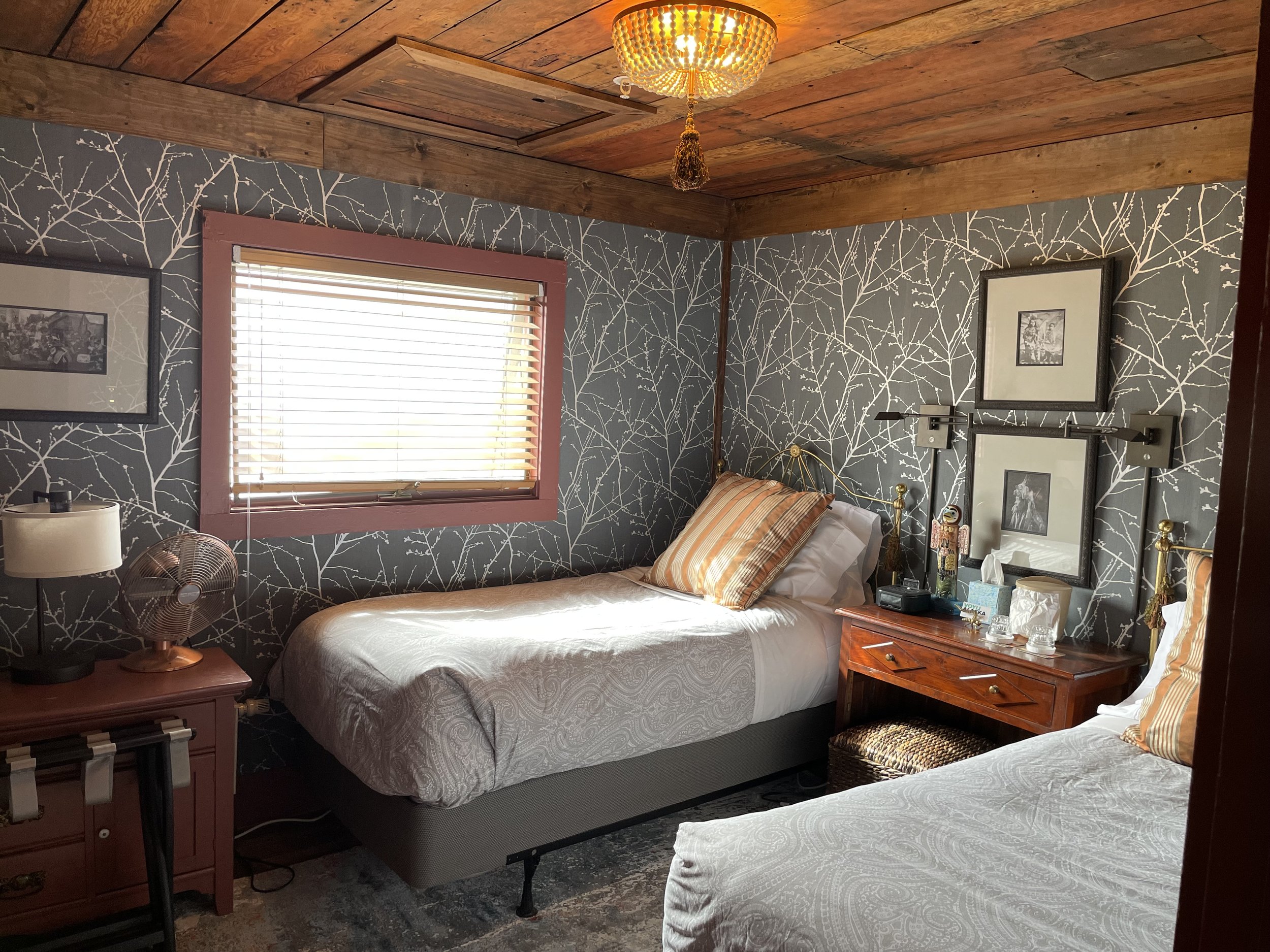
A bed & breakfast out of the history books.
Guest rooms, each named after a woman of the Klondike Gold Rush.
ALICE
Sleeps 4-5 • One Queen Bed • Sun Porch with Two Twin Beds • Private Bath • Downtown View
HATTIE
Sleeps 2 • One Double Bed • Spacious Private Bathroom • Garden View
GRACE
Sleeps 2 • One Double Bed • Shared Bathroom • Robes Provided
DOTTIE
Sleeps 2 • Two Twin Beds • Private Bathroom
KITTY
Sleeps 2 • One Double Bed • Shared Bathroom • Robes Provided
FLO
Sleeps 4 • One Queen Bed • Two Twin Beds • Private Bathroom • Garden View
CLEO
Sleeps 2 • One Double • Private Toilet & Sink • Shared Shower • Robes Provided
IDA
Sleeps 2 • Two Twin Beds • Shared Bathroom • Robes Provided
BIRDIE
Sleeps 2 • One Double • Private Toilet & Sink • Shared Shower • Robes Provided
ESSIE
Sleeps 2 (Smallest Room) • One Double Bed • Shared Bathroom • Robes Provided
Amenities
Full hot breakfast from 7-9 am with eggs, meat, potatoes, fruit, milk, juice, herbal teas, & local roasted Heritage Coffee
Courtesy transportation to/from the ferry, small boat harbor, train, bus, or airport with advance notice call (907) 531-7630
Text connect with Innkeeper before, during, and after your stay
The on-site restaurant, Olivia’s Bistro, serves wild Alaskan dishes
Quiet downtown location in the Skagway Historic District of the Klondike Gold Rush National Park, & walking distance of area services & attractions
Victorian-era decorated rooms with frontiersman antiques
450 thread count sheets & feather duvets
Award-winning floral & culinary garden adjacent to the Inn
Discount on Legends & Lies: A Gold Rush Saloon Room Experience & Alaska Kitchen Science Tours
WIFI access & USB outlet in each room
Satellite television in the lobby (no televisions in guest rooms)
Phones in each room for local calls
Business Center services available
Hair dryer & iron available upon request
Luggage, refrigerator & freezer storage
Complimentary Municipal Parking Pass for street parking & motorcycle off-street spaces available
Family-friendly - 5 and under stay free, children 6-12 additional $10 for breakfast
Pack & play, rollaway, & board games available, walking distance to Mollie Walsh Park Playground & more
Non-smoking
No pets



























